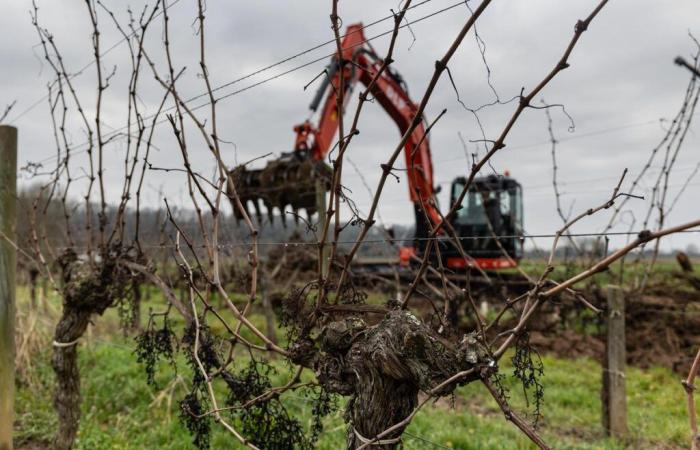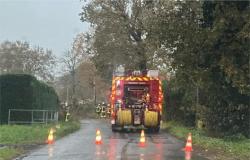
Lgrubbing has been making the headlines in wine news for months and it will continue. The deep crisis experienced by the sector led to the implementation of a policy to reduce surface areas and try to rebalance supply and demand. The latest figures, released this Thursday, concern a definitive grubbing plan launched in mid-October at national level, with a premium of 4,000 euros/ha.
It was a success: 5,418 winegrowers submitted applications to harvest a total of 27,461 hectares (1). Coming in first are Aude (4,956 hectares), Gironde (4,220 hectares), Gard (4,015 hectares), Hérault (3,211 hectares) and the Pyrénées-Orientales (2,614 hectares). For Bordeaux, this national plan comes in addition to a specific plan launched two years ago, with a premium of 6,000 euros/ha. This plan is also successful – it is still in progress – with requests to destroy more than 8,400 hectares. In total, Bordeaux is therefore committed to 12,620 hectares to be harvested with premium, or almost 12% of its current surface area (108,000 hectares of AOC in production). For comparison, this is the equivalent of twice the surface area of the Saint-Émilion vineyard.
Cahors and Gaillac too
Beyond the Gironde, the other wine-growing departments of our region are also affected by this national grubbing-up plan. In Dordogne, 1,100 hectares will be uprooted, or 10% of the total. In Lot-et-Garonne, the expected bleeding will be even greater, with 933 hectares out of a total of 6,000 (15%). It will also be 639 hectares in Gers, 748 hectares in Cahors, a thousand in Gaillac.
This definitive grubbing plan, financed by the State to the tune of 110 million euros, could be followed by a temporary grubbing plan that the profession is calling for (bonus paid with the possibility of replanting a few years later ). In total, national officials estimate that 100,000 hectares would have to be uprooted in France, or almost 15% of the current vineyard (750,000 hectares).
(1) A third of the areas to be uprooted concern winegrowers who will stop all activity.





